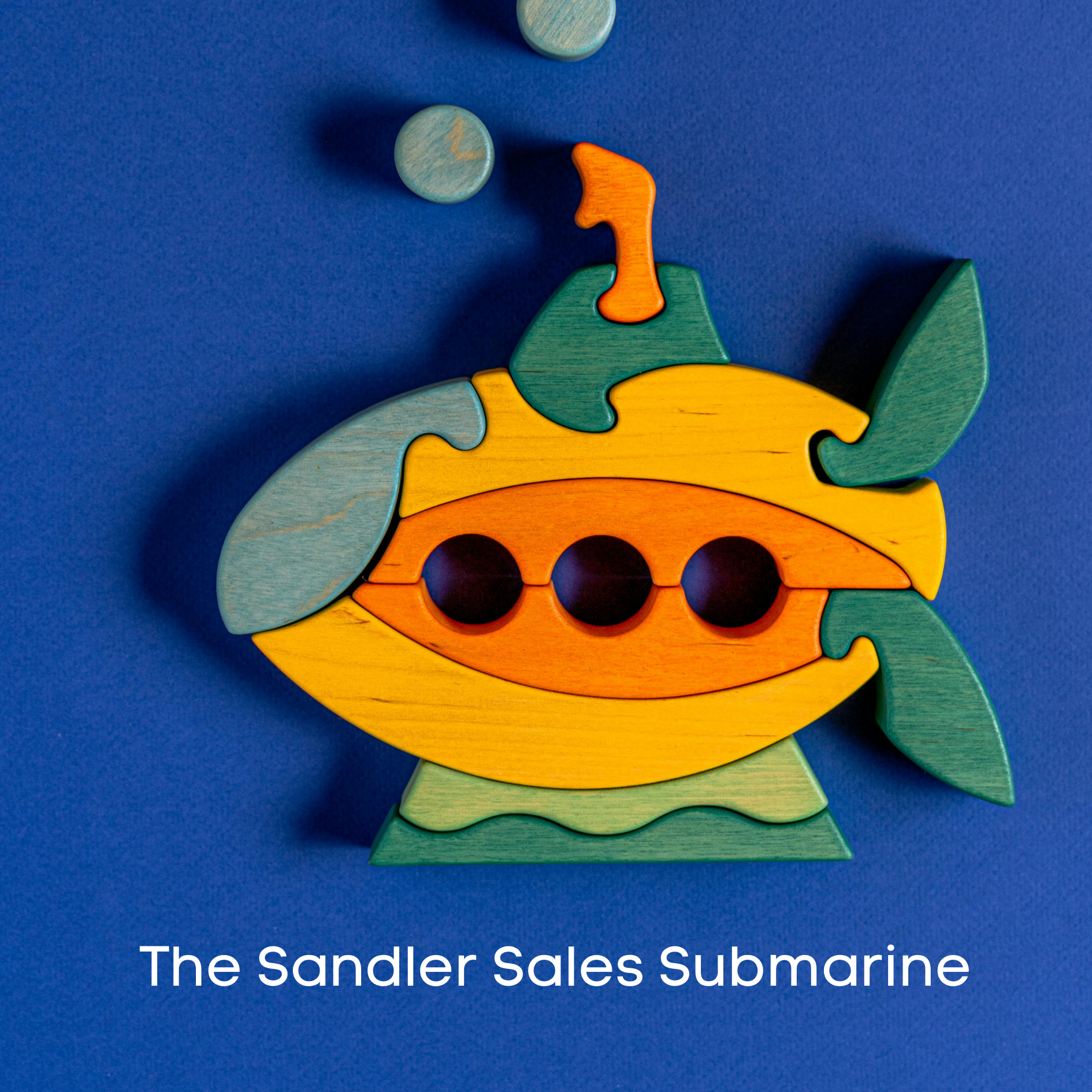Attract, Nurture and Close Clients Like a Pro
Picture this: You wake up, check your inbox, and... it actually isn't drier than the Sahara Desert. Instead, you see messages from clients who are ready to work with you. No more panicked and exhausting cold pitches, no more wondering where your next project is coming from. Just a steady flow of well-paying work. That’s the power of an effective sales funnel.
An optimized sales funnel turns random client wins into a predictable business. No more dry months, no more waiting for referrals. Just a steady stream of leads, booked projects, and long-term clients. A sales funnel, on the other hand, gives you a structured way to bring in clients consistently. It helps you qualify leads faster, build trust, and close deals more effectively, so you’re not constantly chasing new work.
Summary:
Struggling to attract and convert clients consistently? Many freelancers face the challenge of securing steady work, often relying on unpredictable referrals and one-off gigs. Without a structured system, landing clients can feel like an endless cycle of cold outreach and dry spells. This guide breaks down the freelance sales funnel—a step-by-step process that helps you attract high-quality leads, nurture relationships, and close deals with confidence. Drawing from years of B2B sales experience, I’ll walk you through how to optimize your client acquisition process. Check out our Trello Freelancer Sales Pipeline by clicking on the link below:
![]()
What is a Freelance Sales Funnel?

Think of a sales funnel as the journey a potential client takes from first discovering you to finally hiring you. Instead of hoping they reach out, you guide them through a process that makes working with you an easy and obvious choice.
A well-structured sales funnel has five main stages:
- Attract – Get in front of the right people.
- Track & Manage Leads – Keep track of potential clients using a CRM.
- Engage & Nurture – Build trust and stay top of mind.
- Convert – Close the deal and secure the project.
- Deliver & Upsell – Keep clients happy and encourage repeat business.
If you wanted to go deeper, there are even more detailed funnels like my personal favourite, the Sandler Sales Submarine, shown below. Check out our article on using it to convert leads into paying customers.

But without further ado, let's dive into creating a sales funnel that will keep you busy for as long as you like.

Step 1: Attract the Right Clients
Your sales funnel starts with visibility. If potential clients don’t know you exist, they can’t hire you. But more importantly, how do you get noticed by the right people? (emphasis on the right people!). The first step in attracting the right clients is knowing exactly who they are. If you haven't already, check out our post on drafting customer personas to define your ideal client. Once you have a clear picture of who they are, it becomes much easier to determine where to find them and how to grab their attention.
Here are some proven ways to attract clients:
- Content Marketing – Share insights on LinkedIn, Twitter (I refuse to say X), Medium, or YouTube to position yourself as an expert.
- Cold Outreach – Connect with potential clients on LinkedIn or via email, but focus on starting real conversations rather than pitching immediately.
- Freelance Platforms – Optimize your Upwork, Toptal, or Fiverr profile to attract quality clients.
- Networking & Referrals – Tap into your connections and past clients for introductions.
- SEO & Paid Ads – Get in front of clients actively searching for your services.
Pro Tip
Instead of listing what you do, make your website and portfolio about how you solve client problems. To make this easier, consider defining exactly what value you bring. Use case studies and testimonials to build credibility.
Step 2: Engage & Nurture Leads
Getting noticed is just the first step. Most clients won’t hire you the first time they see your name. They need time to trust you, so nurturing that relationship is key.
Here’s how to stay on their radar:
- Offer Free Value – Everybody, and I mean everybody, loves some free s#%t. What better way to get attention than having a big 🎉 FOR FREE 🎉 banner outside your shop window? Share tips, guides, or videos to showcase your expertise. Though here's the thing: don't make the mistake of going around sharing knowledge everybody knows for free. Add your own personal touch and opinion to it to make it more valuable.
- Create a Lead Magnet – A free checklist or mini-course in exchange for an email keeps them in your ecosystem.
- Engage on Social Media – Comment, reply, and interact with potential clients online.
- Email Sequences – Send useful emails that provide insights and build trust over time.
Pro Tip
Most leads take 7–8 touchpoints before they convert. So don’t give up too soon! But also practice subtilty and know when to call it quits. Nobody wants to be harassed!
Step 3: Convert Prospects into Clients (The Close)
Now comes the most crucial part—getting the client to sign the contract. This is where most freelancers either undersell themselves or spend too much time on non-serious clients.
How to Close More Deals (Without Feeling Salesy)
- Pre-Qualify Leads Early: Before the call, send a quick questionnaire to assess if they’re serious.
- Use Up-Front Contracts: Set clear expectations at the start of every meeting:
"In this call, I’ll learn about your needs, explain my process, and if we’re a good fit, we can discuss next steps. Does that sound good?" - Ask Discovery Questions: Instead of pitching, ask about their pain points first:
- "What’s your biggest challenge right now?"
- "Why is this project important to you?"
- "What happens if you don’t solve this problem?"
- Talk Budget Early: Be confident about discussing pricing upfront to avoid surprises.
- Offer Tiered Packages: Present three pricing options (Basic, Standard, Premium) to make it easier for clients to say yes.
Tools for Closing Clients
- Check out our SLA template – to ensure you have a comprehensive contract.
- Consider using a CRM like Bonsai or Fivver Workspace – for proposal and contract management.
- Check out our Invoicing Feature – for easy invoice processing.
Action Tip
Use the "Next Steps Close" method. At the end of a meeting, say:
"Great, based on what we discussed, I’ll send over a proposal by Friday. Does that work for you?"
This removes hesitation and keeps the process moving.
![]()
Step 4: Deliver & Upsell (Maximize Client Value)
Your job doesn’t stop after signing the contract. To build a sustainable freelance business, you need repeat clients and referrals.
How to Retain Clients & Increase Revenue
- Deliver Exceptional Work: Exceed expectations and meet deadlines consistently.
- Offer a Smooth Onboarding Experience: Use an onboarding questionnaire and set clear milestones.
- Upsell Additional Services: If a client hires you for a website, offer SEO or ongoing maintenance as an upsell.
- Ask for Testimonials & Referrals: Happy clients will happily introduce you to others.
Tools for Retention & Upsells
- HoneyBook or Bonsai – for client management.
- Loom – for personalized follow-ups and check-ins.
- Google Forms – for collecting feedback and testimonials.
Action Tip
Set up a "Client Success Check-In" one month after delivering the project. Ask:
- "How has the project impacted your business?"
- "Is there anything I can help with next?"
Track & Manage Leads Using a Sales CRM

Attracting leads is great, but if you don’t keep track of them, they’ll slip through the cracks. This is where a Customer Relationship Management (CRM) system comes in. A CRM helps you organize client interactions, track follow-ups, and move leads through your funnel efficiently.
Best CRM Tools for Freelancers:
Free Options:
- Trello – Simple and visual way to track leads.
- HubSpot CRM – A powerful free option with automation features.
- Notion – Customizable and easy to use for tracking prospects.
Paid Options:
- Pipedrive – User-friendly and great for tracking deals.
- Zoho CRM – Affordable and feature-rich.
- Salesforce – Robust but best for scaling businesses.
Pro Tip
Organize your CRM by stages: New Lead → Contacted → Interested → Proposal Sent → Closed. Consider creating a sales pipeline for each customer persona based on how they should be accessed. For example, if you are a wedding photographer, you might consider creating a separate sales pipeline for wedding planners, wedding venues, and recently engaged people. Your outreach for each would be designed around each persona's pain points.
👉 Submit your email below and get access to our Trello Sales Pipeline for Freelancers to keep track of your leads effortlessly!


Next Steps:
- Audit Your Current Sales Process – Where are leads dropping off?
- Implement One Step at a Time – Start with lead nurturing or improving your closing techniques.
- Use the Right Tools – Automate what you can to save time.








